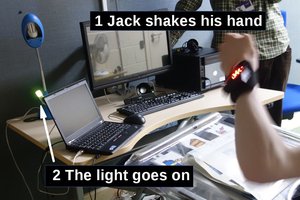
Yamaha PSR-70 is an arranger keyboard from 1985, with 32 fixed sounds and auto accompaniment with 16 rhythms. Keyboard is 5 octaves, no velocity sensitivity, no modulation or pitch wheel.
Although the keyboard is quite
ascetic as an instrument, its
sound chips are more capable than the user interface and the
firmware enable. Here
is a demo of Yamaha CLP-100, containing the same YM3806 as sound
source. https://www.youtube.com/watch?v=24NF3rJSGHg
Because there is no documentation available for the sound chips, it needs to be written. That’s why this reverse engineering project exists. And of course, having fun with old electronics!
From the inside the device looks like this:

The big board in the center contains the essential components. By turning the board over it is quick to see the preconditions for the hacking project:
- Sounds are produced by a Yamaha’s own YM3806, also known as OPQ circuit. It is a 4 operator FM synthesizer with 8 voices. This is about all internet knows about this IC.
- Drum sounds come from Yamaha’s YM2154, or RYP4, which is a sample based drum chip. Not much is known about it either.
- CPU is NEC D70008, which is a Z80 clone.
- Fimware is in one 32 KB EPROM (27256) so it is easy to read out.

Current status of the project
- Hardware has been reversed far enough to understand the basics, memory and I/O maps.
- Program ROMs have been read out, disassembled and analyzed.
- Various test programs have been written and can be run in the PSR-70 hardware using EPROM emulator.
- Using information gathered in previous steps, a decent understanding of the OPQ and RYP4 chips has been gained.
- Programmers guide V 1.1 for the OPQ has been written (file Guides/OPQ_ProgGuide.pdf).
- Programmers guide V 1.1 for the RYP4 has been written (file Guides/RYP4_ProgGuide.pdf).
- Drum sample ROMs have been dumped.
Current versions of the programmer’s guides: https://github.com/JKN0/PSR70-reverse/tree/master/Guides
A
more detailed description of the reverse engineering project: https://retroandreverse.blogspot.com/search/label/PSR-70%20reverse%20engineering
ROM
dumps, disassembly listings etc: https://github.com/JKN0/PSR70-reverse
 JKN0
JKN0


 matt oppenheim
matt oppenheim
 Augusto Baffa
Augusto Baffa
معلومات قيمه جدا شكرا لجهودك الطيبه واتمنى ان يكون توظيح لجميع اجهزت اورجات ياماها